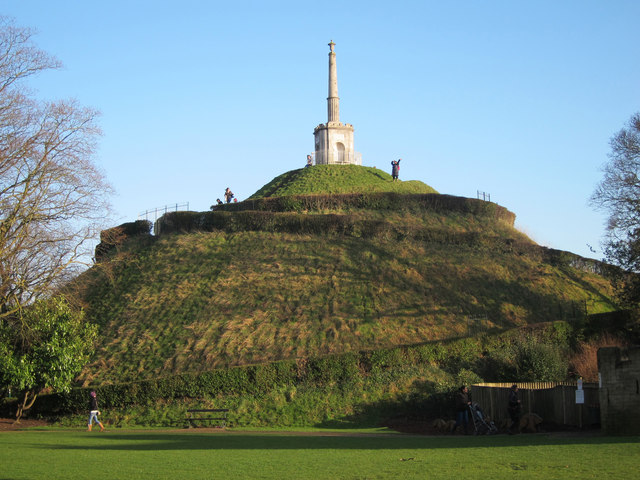Dane John Mound on:
[Wikipedia]
[Google]
[Amazon]
 The Dane John Mound, also known as the Dane John Gardens, is a former Roman cemetery in the city of
The Dane John Mound, also known as the Dane John Gardens, is a former Roman cemetery in the city of
 The Dane John Mound, also known as the Dane John Gardens, is a former Roman cemetery in the city of
The Dane John Mound, also known as the Dane John Gardens, is a former Roman cemetery in the city of Canterbury
Canterbury (, ) is a cathedral city and UNESCO World Heritage Site, situated in the heart of the City of Canterbury local government district of Kent, England. It lies on the River Stour.
The Archbishop of Canterbury is the primate of ...
, Kent
Kent is a county in South East England and one of the home counties. It borders Greater London to the north-west, Surrey to the west and East Sussex to the south-west, and Essex to the north across the estuary of the River Thames; it faces ...
. It was converted into a motte-and-bailey castle in the 11th century, and turned into a civic park between 1790 and 1803.
History
The first construction on the Dane John site was a burial mound, built during the Roman occupation of Canterbury between the 1st and 4th centuries AD. In 1066, Canterbury was occupied by the Normans.William the Conqueror
William I; ang, WillelmI (Bates ''William the Conqueror'' p. 33– 9 September 1087), usually known as William the Conqueror and sometimes William the Bastard, was the first House of Normandy, Norman List of English monarchs#House of Norman ...
instructed that a castle was to be built in the city; it was built on the south side of the city using the Dane John mound and formed part of the circuit of defence, with property being destroyed to make room for it. This timber motte and bailey castle was later abandoned and the second Canterbury Castle
Canterbury Castle is a Norman Castle in Canterbury, Kent, England (). It is a five-minute walk from Canterbury East Station and main bus station around City Wall.
Canterbury Castle was one of the three original Royal castles of Kent (the other t ...
was built just to the north in 1123.
The Dane John Gardens were built between 1790 and 1803 by alderman James Simmons, in the south-east corner of the walls, remodelling the old castle motte, and incorporating the Roman bank and the medieval wall-walk into the design,; although their design was later accredited to William Masters
William Howell Masters (December 27, 1915 – February 16, 2001) was an American gynecologist, best known as the senior member of the Masters and Johnson sexuality research team. Along with his partner Virginia E. Johnson, he pioneered research i ...
, the Canterbury nurseryman.Desmond, R. (1994). ''Dictionary of British & Irish Botanists & Horticulturists'', p.475. Taylor & Francis, and Natural History Museum
A natural history museum or museum of natural history is a scientific institution with natural history collections that include current and historical records of animals, plants, fungi, ecosystems, geology, paleontology, climatology, and more. ...
, London. The ownership of the land was disputed, and the park was taken into the control of the city shortly after its construction.
During the Second World War
World War II or the Second World War, often abbreviated as WWII or WW2, was a world war that lasted from 1939 to 1945. It involved the vast majority of the world's countries—including all of the great powers—forming two opposi ...
, part of the city walls near the Dane John Gardens were turned into an ammunition depot, dug into the bank of the wall. The gardens are Grade II listed on the Register of Historic Parks and Gardens. The monument atop the mound and the sundial are each Grade II listed on the National Heritage List for England
The National Heritage List for England (NHLE) is England's official database of protected heritage assets. It includes details of all English listed buildings, scheduled monuments, register of historic parks and gardens, protected shipwrecks, a ...
.
References
;References ;Bibliography * * * {{coord, 51.27492, 1.07783, region:GB, display=title Buildings and structures in Roman Britain Canterbury Castles in Kent Grade II listed parks and gardens in Kent Parks and open spaces in Kent